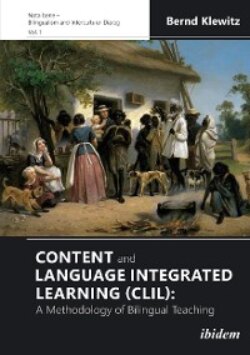Читать книгу Content and Language Integrated Learning (CLIL): A Methodology of Bilingual Teaching - Bernd Klewitz - Страница 24
3.5 The Task-based Approach
ОглавлениеSometimes the focus on grammatical forms may be an advantage provided that L2 learners have reached a stage where explanations and the comprehension of rules and their implementation are possible (cf. Videsott: 11). But “the role of formal instruction itself has been a perennial area of debate, and more than 20 years of research have failed to yield firm guidelines for grammar teaching methodology” (Borg 1999: 157, cit. in Timmis 2012:119). This is why the use of tasks in language teaching has developed as a distinct concept of Task Based Teaching and Learning (TBLT; cf. chapter 6.3), connecting grammar pedagogy and task-based methodology. A task in this sense is embedded in a language project, “an activity in which a person engages in order to attain an objective, and which necessitates the use of language” (Ellis 2003: 1f). With a primary focus on meaning, task-based verbs are used to close particular gaps in information, reasoning and opinion—allowing for students to choose the necessary language skills and attaining a clearly defined non-linguistic outcome (cf. De Florio 2018: 80).
What kind of language is needed to close these gaps depends as much on the needs of the students involved as the selection of grammar skills and lexis. But “how much grammar is needed?” is an oft-asked question, in this context answered by post-modern language methodology with the proposal “not as much as commonly believed”. And the theory of practice is reflected in the guidelines of the American Council on the Teaching of Foreign Languages (ACTFL): “Meaning needs to precede form as the basis for comprehension: before looking at letters or characters, before looking for clues in grammatical forms or word order, before trying to figure out details, learners should search for overall meaning.” (ACTFL 2020: n.p.) Implications for teaching strategies in CLIL programs will be discussed in detail in chapter 8 (CLIL Tools and Skills, 8.2: Task-based Language Teaching—TBLT).
Review—reflect—research
Franz Boas would not have reneged on his strong believe that “America was politically an ideal country”. But would he, in the light of four years of Trumpism?
In the light of different theories about Second Language Acquisition (SlA), what can be inferred from these about how foreign languages can best be taught?
There are different opinions about “nature versus nurture” in the neuro-biological domain. Why does this controversy not go away according to Steven Pinker?
1 This part of my narrative is based on general literature, and individual contributions served as a blueprint, such as NYU 2015, Everett 2017, Lanir 2019, Meisel 2019.
2 Different and culture dependent aspects of standard-based learning and competence levels are referred to in “American Standards”, “Australian VCE” and “CEF”.
